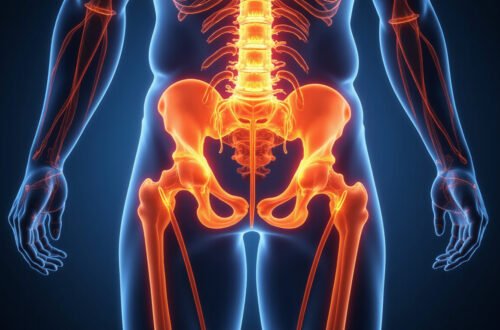Sciatica is a common condition that causes sharp, shooting pain along the sciatic nerve, typically affecting one side of the body. If you’re searching for effective sciatica relief tips, you’re not alone. Many people experience sciatica pain that interferes with daily activities and diminishes quality of life. Fortunately, there are practical ways to ease this discomfort and promote healing. In this article, we’ll explore proven strategies for sciatica relief that actually work, helping you reclaim comfort and mobility.
What Is Sciatica and Why Does It Hurt?
Sciatica refers to pain originating from irritation or compression of the sciatic nerve, which runs from your lower back through your hips and buttocks down each leg. Common causes include herniated discs, spinal stenosis, muscle spasms, or injury. The pain often manifests as a burning, tingling, or numb sensation and can be accompanied by weakness.
Understanding the root cause of your sciatica is essential in choosing the right relief methods. Whether your pain is mild or debilitating, incorporating effective sciatica relief tips into your routine can significantly reduce symptoms.
Effective Sciatica Relief Tips to Try Today
Managing sciatica doesn’t always require invasive treatments or medications. Many individuals find significant relief by adopting simple, natural approaches. Here are some of the most effective sciatica relief tips you can implement:
1. Apply Heat and Cold Therapy
Alternating between heat and cold packs is a straightforward technique that targets inflammation and muscle tension.
- Cold therapy: Use an ice pack wrapped in a cloth for 15-20 minutes every few hours during the initial stages of pain to reduce inflammation and numb sharp pain.
- Heat therapy: After the first 48 hours, switch to a heating pad or warm towel to loosen tight muscles around the sciatic nerve, enhancing blood flow and healing.
2. Engage in Gentle Stretching and Exercise
Regular movement strengthens muscles supporting the spine and improves flexibility, which can alleviate nerve pressure. Some of the best exercises include:
- Piriformis stretch: Targets the piriformis muscle, which sometimes irritates the sciatic nerve.
- Knee-to-chest stretch: Helps relieve lower back tightness.
- Pelvic tilts: Promote lumbar spine mobility.
Avoid any stretches or exercises that exacerbate your pain.
3. Maintain Proper Posture
Poor posture puts additional strain on your lower back and can worsen sciatica symptoms. Follow these guidelines:
- Sit with your feet flat on the floor and your back supported.
- Avoid slouching or leaning forward for extended periods.
- Use ergonomic chairs or lumbar support cushions if you sit for long durations.
4. Try Over-the-Counter Pain Relievers Wisely
Nonsteroidal anti-inflammatory drugs (NSAIDs) like ibuprofen or naproxen can temporarily ease pain and inflammation. Always adhere to the recommended dosage and consult your healthcare provider if you plan to use these medications for an extended time.
5. Consider Physical Therapy
Working with a licensed physical therapist can provide personalized treatment plans focused on strengthening, flexibility, and posture correction. Physical therapy is often one of the most effective long-term solutions for sciatica pain relief since it addresses the root causes rather than just symptoms.

6. Mind Your Sleeping Position
Your sleeping posture can influence sciatica pain levels. Try these tips:
- Sleep on your side with a pillow between your knees to keep your spine aligned.
- If you prefer sleeping on your back, place a pillow under your knees to reduce pressure on your lower back.
7. Explore Alternative Therapies
Many individuals find relief through alternative treatments, including:
- Acupuncture: Stimulates healing and reduces pain by targeting specific pressure points.
- Chiropractic care: Spinal adjustments may improve alignment and relieve nerve compression.
- Massage therapy: Helps reduce muscle tension surrounding the sciatic nerve.
Sciatica Relief Tips Checklist: What You Should Do
To make it easier to follow these advice points, here’s a quick checklist of sciatica relief tips that actually work:
- Apply ice packs initially, then switch to heat therapy after 48 hours.
- Perform gentle stretching exercises daily.
- Maintain proper sitting and standing posture.
- Use OTC painkillers cautiously.
- Consult a physical therapist for customized rehabilitation.
- Adjust your sleeping position for better spinal alignment.
- Explore acupuncture or massage for additional relief.
When to Seek Medical Attention
While most sciatica cases improve with conservative care, some situations demand prompt medical evaluation. Seek emergency care if your sciatic pain is accompanied by:
- Severe numbness or weakness in your legs or feet.
- Loss of bladder or bowel control.
- Persistent pain after several weeks of self-care.
These symptoms can signal serious nerve damage or underlying conditions needing advanced treatment.
Frequently Asked Questions About Sciatica Relief Tips
1. What are the fastest sciatica relief tips for acute pain?
For sudden and intense sciatica pain, the fastest relief methods are applying cold compresses to reduce inflammation and taking NSAIDs as directed. Following this, gentle stretching and heat therapy can help ease muscle tightness and promote healing.
2. Can sciatica relief tips prevent future flare-ups?
Yes, maintaining good posture, regular exercise focusing on core strength and flexibility, and ergonomic adjustments at work and home can significantly reduce the likelihood of future sciatica flare-ups.
3. Are sciatica relief tips different for pregnancy-related sciatica?
Pregnancy-related sciatica often results from increased pressure on the sciatic nerve due to weight gain and hormonal changes. Safe sciatica relief tips during pregnancy include gentle stretching, prenatal yoga, using heat therapy, and consulting a healthcare provider before using any medications or alternative treatments.
Why Trust These Sciatica Relief Tips?
The suggestions offered here are grounded in evidence-based practices widely endorsed by medical professionals. According to the Mayo Clinic, conservative treatments such as physical therapy, proper posture, and pain relievers form the mainstay of managing sciatica effectively (source). Incorporating these tips into your daily routine can empower you to take control of your pain and improve your overall well-being.
Take Action for Sciatica Relief Today
Don’t let sciatica pain prevent you from living your life to the fullest. By applying these sciatica relief tips consistently, you can experience marked improvement in your symptoms and reduce the risk of chronic issues. Start with small changes like adjusting your posture or adding gentle stretches, and gradually explore other methods such as physical therapy or alternative treatments. If pain persists or worsens, seek professional medical advice to identify the best course of action.
Remember, effective sciatica relief is achievable with patience, dedication, and the right knowledge. Take your first step toward a pain-free life now!






